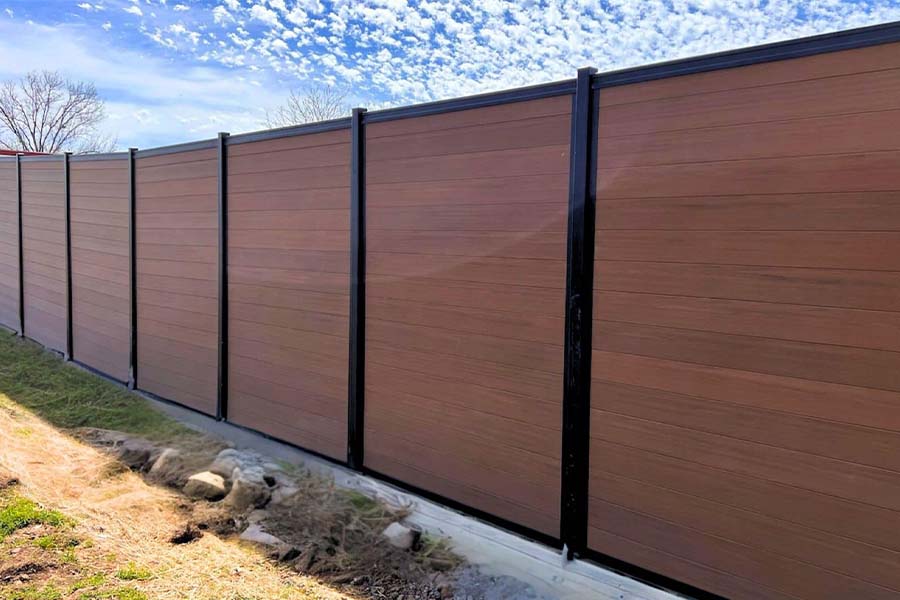Featured

Whether you like the timeless appearance of paint or the all-natural appearance of a tarnish, these finishes safeguard your wooden fencing from the elements and extend its lifespan. How typically should you repaint or discolor your wooden fencing?
Aspects That Impact Painting and Staining Regularity. The frequency at which you need to paint or discolor your fencing is influenced by a number of elements, including your environment, the type of wood, and the finish you pick. Comprehending these variables can aid you establish an extra exact timetable for your fence's upkeep.
- Environment and Climate Conditions. The local climate problems in your location will have a significant effect on exactly how rapidly your fence requires interest. In regions with severe weather condition, the fencing will experience more wear and tear, needing more constant maintenance.
Hot, Sunny Climates: Straight sunlight can cause timber to dry out and end up being fragile, causing breaking and fading. You might need to paint or restain every 2 to 3 years to keep its look and shield it from UV damage if your fencing is exposed to intense sun. Rainfall and Humidity: Areas with frequent rain or high moisture can result in moisture leaking right into the timber. This can trigger the wood to swell, rot, or develop mold and mildew and mildew. In such environments, discoloration or painting every 1 to 2 years is normally needed to maintain the timber secured and shielded. Cold, Freezing Temperatures: If your fence is exposed to freezing temperature levels, the wood might get and broaden with the adjustments in temperature. This can create the paint or stain to peel and fracture. In cool climates, fences generally require to be painted or restained every 3 to 5 years. 2. Kind of Timber. The sort of timber your fence is made from will certainly affect how regularly it needs painting or staining. Different woods react differently to weather, dampness, and UV rays.
Cedar and Redwood: These timbers are normally immune to degeneration and insect damage, making them much more long lasting than various other timbers. However, they may still require discoloration every 2 to 3 years to preserve their shade and secure them from the sun's harsh rays. Pine and Fir: Softwoods like want and fir are a lot more vulnerable to absorbing dampness and fading gradually. You may need to discolor or paint these woods regularly-- about every 1 to 2 years-- to prevent water damage and keep them looking fresh. Pressure-Treated Wood: Pressure-treated wood resists rot and bug damages however can still soak up dampness. It's suggested to use a discolor or sealant every 2 to 3 years to maintain the timber protected. 3. Tarnish vs. repaint. The kind of coating you select for your fencing-- paint or stain-- impacts how usually you will certainly require to touch it up.

Paint: Paint forms a thick, protective layer on the surface of the timber. It's proficient at shutting out UV rays and dampness, however over time it can peel, crack, or discolor. Usually, a painted fence requires to be repainted every 3 to 5 years, depending on direct exposure to the components. Tarnish: Stain soaks into the timber, supplying a more all-natural appearance while still providing protection from moisture and UV rays. Stain usually requires to be reapplied every 2 to 3 years, as it has a tendency to discolor faster than paint, particularly when subjected to route sunshine. 4. Signs Your Fencing Needs a Fresh Coat. Even if you don't follow a set timeline for paint or staining, it's crucial to look for signs that indicate when your fencing requires attention. Seek these typical indications:
Fading or Staining: If your fencing is shedding its shade or has transformed grey, it may be time to apply a fresh layer of tarnish or repaint to restore its look. Breaking or peeling: If the paint or discolor is peeling off or breaking, your fencing is no more fully secured, and water might be able to leak right into the wood. This can result in rot or mold. Water Taking in: You can execute a straightforward water test by spraying some water on your fencing. The coating is still working if the water beads up. If it takes in, it's time to paint or restain. 5. Appropriate Upkeep for Longevity. To expand the life of your fence and make certain the very best outcomes, take time to prepare the surface area before applying paint or stain. Clean the fence thoroughly, removing dirt, mold, debris, and mold. Repair any type of splits or damage to the wood before beginning the discoloration or paint process.
Select a completely dry, mild day for using your finish. Stay clear of doing this on extremely warm, chilly, or humid days, as it can cause the paint or discolor to dry as well quickly, leaving streaks or an irregular coating. Adhere to the producer's directions for the very best application methods, and constantly allow the timber to dry fully between coats.
Verdict. As a whole, a wooden fencing should be repainted or stained every 2 to 3 years, though the frequency can differ relying on your environment, the kind of wood, and whether the fencing is repainted or stained. Normal upkeep helps protect the timber from damages brought on by moisture, sunlight, and rain, ensuring your fencing remains solid, useful, and attractive. By remaining on top of fencing care, you can enjoy its charm for years ahead, without the concern of premature deterioration.
Latest Posts
Enhance Your Home's Outside with Weathercraft's Home siding Solutions
Published May 27, 25
1 min read
Comprehending Roofing Guarantees: What Homeowners Need To Know
Published May 22, 25
1 min read
Dependable Industrial Roof Covering Providers by Weathercraft
Published May 22, 25
2 min read